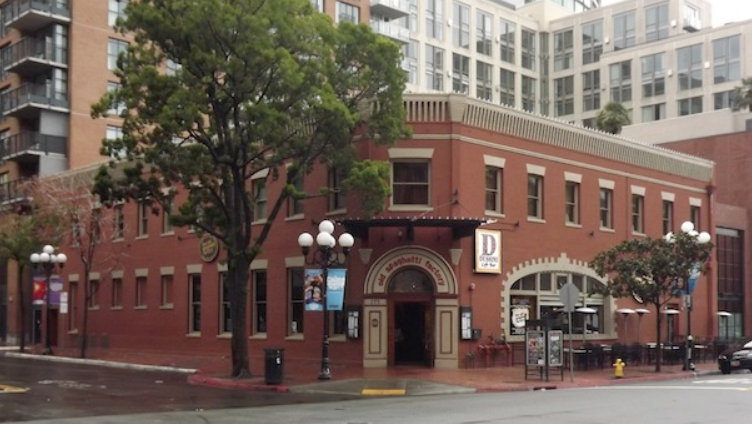No products in the cart.
Landmarks
The Old Spaghetti Factory
On April 3, 1871, Alonzo Horton sold the southeast corner lot at Fifth Avenue and K Street to W.A Buttrich and G.A. Flower for $1,000. This was an excellent price for a lot only one block from the bay, especially since in the week prior, Horton had sold an adjoining lot to Thomas L. Nesmith for $1,400.
Nesmith was an important figure in early San Diego history as he was president of the Bank of San Diego, the incorporator of the San Diego Daily Bulletin, a trustee of the San Diego Publishing Company, director of the Texas and Pacific Railroad Company, and the first president of the San Diego Benevolent Association. Additionally, in his will, Nesmith made the unusual bequest of $5,000 to the city of San Diego to be used to build a school named after him 150 years after his death.
In the following years, the Buttrich lot passed through several owners, including another Buttrich (L.A. Buttrich). In 1873, the property was purchased by John B. Capron, the owner and operator of a stage line, which ran from Yuma, Arizona to Los Angeles, California. He also carried the mail from Arizona via Tucson to San Diego.
Capron sold the property to Joseph Flint and Enoch Winsby, who partnered with B.W. McKenzie, to form the McKenzie, Flint and Winsby Company. They developed into one of the largest and most enterprising companies in San Diego and according to the San Diego Union, Jan. 30, 1896, specialized in “everything used in water and gas works, irrigating and sewer systems.”
As their business grew by leaps and bounds, the original two-story wooden building on the property became too small and was replaced in 1898 by the current structure, a two-story style brick structure. It featured a non-combustible roof, an open freight elevator, a skylight on the second floor, a parapet above the roof and a firewall around the building. It also incorporated a flat arched bay window in the reception area.
This magnificent edifice was designed by Irving Gill, one of the most well-respected architects of his time. Gill went on to design the Marston House, the Bishop’s School, the Western Metal building, the La Jolla Women’s Club, and the Scripps Institute of Oceanography, just to name a few! He was one of the few American architects to develop a style uniquely his own. Gill believed that European styles were too ornate and preferred natural forms more fitted to the manner in which people currently lived.
In 1902, McKenzie, Flint and Winsby were succeeded by the Western Metal Supply Co. Western Metal moved out in 1910, and Wandrey-Bangs-Ward Company, who specialized in paper products, moved in. They, in turn, gave way to Buel-Town Company, who remained until 1972. Buel-Town specialized in paint, chemicals, paper products and notions. The building was briefly a laundry and dry cleaners, and in 1974, Gus Dussin purchased the property.
Dussin spent over $1 million to fully renovate the interior of the building, which included antique furnishings, decorative lighting and stained glass. It even housed an antique trolley car, which eventually doubled as a dining area. He then opened the finished product as the Old Spaghetti Factory.
At the time, most people thought he was very poorly advised to open a restaurant in the Gaslamp, which was just beginning to see signs of redevelopment. However, the Old Spaghetti Factory was exactly what was needed to persuade people to come Downtown and experience history, while enjoying a delicious dinner in a family-oriented atmosphere. Still one of the Gaslamp’s most popular restaurants, the Old Spaghetti Factory features lunch, dinner, catering and a warm welcome to all.
On a personal note, I always took my children to the Old Spaghetti Factory for their birthdays. They, in turn, took their children there, and in 2014, my granddaughter hosted the rehearsal dinner for her wedding in the upstairs banquet room. She said she wanted a venue where she felt comfortable and happy. The Old Spaghetti Factory has provided many generations of San Diegans with warm memories and consistently great service and the tradition continues to this day.
If you want to learn more about the beautiful, historic buildings in the Gaslamp, take an Historical Walking Tour on Thursdays at 1 p.m. or Saturdays at 11 a.m.
—Sandee Wilhoit is the historian for the Gaslamp Quarter Historical Foundation. She can be reached at [email protected].

